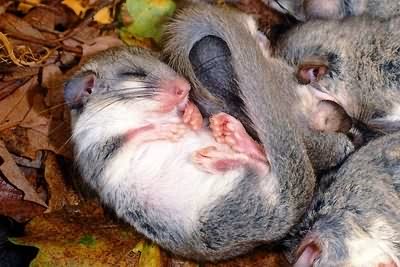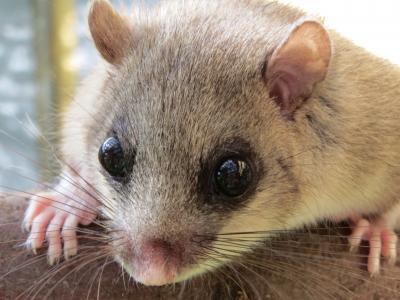Female edible dormice (Glis glis) have a pleasant taste and have long been viewed as a special delicacy. The Romans even kept them in captivity to fatten them up for eating, which explains the "edible" part of their name.
The reason is because after summer ends, and they are done caring for their young, they start to replenish their fat stores to cope with the upcoming winter. Later in the year, when outside temperatures drop, dormice move to their hibernation quarters where they will spend months without food. During hibernation, dormice enter phases of 'torpor': they drastically reduce their metabolic rate and lower their body temperature to that of the surrounding environment.
Every few weeks they boost their metabolism and their body temperature returns for a few hours to "normal" levels, although the animals do not really "wake up" or leave their underground hibernacula. These periods of arousal, which all hibernating mammals experience, are when most of the fat is burned during hibernation.

Edible dormouse. Credit and link: Agroatlas
It is believed that the periodic warm-up phases serve to counteract the negative impacts of a reduced metabolic rate, such as drops in immune competence at lower body temperatures.
Individual dormice enter hibernation with different fat reserves but how dormice use their body fat reserves to optimize their chances of surviving in a good condition has remained a matter of conjecture. Together with Fritz Geiser of the University of New England, Claudia Bieber and colleagues at the Vetmeduni Vienna have analyzed body temperature data collected continuously from 42 hibernating dormice.
The fatter animals did not shorten their hibernation, although environmental conditions would have allowed them to do so. Some animals even hibernated in summery conditions until the beginning of July. Instead of emerging earlier, the fatter dormice used their extra reserves to increase their metabolic rate more frequently and spend more time at normal body temperature during hibernation.
This strategy seems to enable dormice to minimize the negative effects of torpor while maximizing the total hibernation time.

How dormice use their body fat reserves during hibernation has remained a matter of conjecture. Researchers found out that fat dormice are fitter than thin ones during hibernation. Photo: Claudia Bieber / Vetmeduni Vienna
Why should animals prefer to hibernate underground when outside temperatures would allow them to forage without energetic constraints? The researchers explain this with a beneficial side-effect of hibernation: hidden underground, dormice are not easily found by predators and thus have a higher chance of survival. As long as the dormice do not have to emerge to find a partner and reproduce, they are better off in their subterranean hideouts. A broader implication of the result is that climatic conditions are not the only factor that influences the duration of hibernation. Climate change could therefore affect hibernators quite differently from how we might expect.




Comments